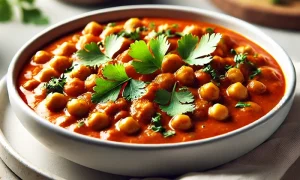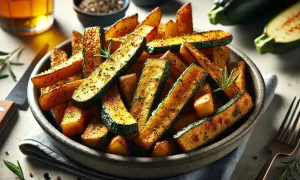Maximizing Yield in a Small Vegetable Garden

If you have a small vegetable garden, you may think that your yield is limited due to the lack of space. However, there are many ways to maximize the yield of your small garden and get the most out of your space. By implementing some simple techniques and choosing the right plants, you can have a bountiful harvest in even the smallest of gardens.
One of the keys to maximizing yield in a small vegetable garden is to choose plants that are well-suited to small spaces. Some plants, such as pumpkins, melons, and zucchini, can take up a lot of room and may not be the best choice for a small garden. Instead, consider planting compact varieties of these plants or choosing vegetables that are naturally smaller, such as radishes, carrots, and lettuce. Additionally, you can choose plants that are known for their high yield, such as beans, peas, and peppers, to get more produce from each plant.
Another way to maximize yield in a small vegetable garden is to use intensive planting techniques. This involves planting crops closer together than you would in a traditional garden, which can help to maximize space and increase yield. You can also use vertical gardening techniques, such as trellising, to grow plants up instead of out, which can save space and increase yield. By implementing these techniques and choosing the right plants, you can get the most out of your small vegetable garden and enjoy a bountiful harvest all season long.
Understanding the Basics of Vegetable Gardening (Key Points)
If you’re new to vegetable gardening, it can feel overwhelming at first. But with a little bit of research, you can get started on the right foot.
Here are some basics to keep in mind. We’ll go into more detail later, but here is a summarized list.
1. Choose the Right Location
In a small garden, it’s especially important to choose the right location. Look for a spot that gets plenty of sunlight, ideally six to eight hours a day. You’ll also want to make sure the soil is well-draining and has plenty of organic matter.
If you’re not sure what type of soil you have, you can get it tested at your local garden center or university extension office. Regardless, it’s probably a good idea to get some garden soil or compost to mix in before you plant.
2. Start with the Right Plants
In a small garden, it’s important to choose plants that will thrive in a small space. Some good options include tomatoes, peppers, lettuce, and herbs like basil and parsley. Look for varieties that are specifically bred for small gardens or containers.
3. Plan Your Garden Layout
Before you start planting, take some time to plan your garden layout. Consider the mature size of your plants and how much space they’ll need. You can use a garden planner tool to help you visualize your garden and make sure everything fits.
4. Prepare Your Soil
Before you plant, you’ll need to prepare your soil. Start by removing any weeds or debris. Then, add plenty of organic matter like compost or aged manure. This will help improve soil structure and fertility.
5. Water and Fertilize
Vegetable plants need plenty of water and nutrients to thrive. Aim to water your garden deeply once a week, rather than giving it a little bit of water every day. This will encourage deeper root growth and help your plants withstand drought. You can also fertilize your plants with a balanced fertilizer every few weeks to help them grow strong and healthy.
By following these basic tips, you’ll be well on your way to a successful vegetable garden in a small space. Remember to do your research, choose the right plants, and plan your garden layout carefully. With a little bit of effort, you’ll be rewarded with a bountiful harvest of fresh, delicious vegetables.
Choosing the Right Location
When it comes to maximizing yield in your small vegetable garden, choosing the right location is crucial. Here are a few things to consider:
Sunlight
Your plants need sunlight to grow, so it’s important to choose a location that gets plenty of it. Look for an area that gets at least six hours of direct sunlight per day. If your garden is in a shaded area, you may need to consider adding some artificial light to help your plants grow.
Shade
While sunlight is important, some plants also need a little bit of shade to thrive. If you’re growing vegetables that don’t do well in direct sunlight, like lettuce or spinach, consider planting them in a spot that gets some shade during the day.
Choosing the Right Location
When choosing a location for your garden, there are a few things to keep in mind:
- Convenience: Choose a location that is convenient for you to access. If you have to walk a long way to get to your garden, you may be less likely to tend to it regularly.
- Drainage: Make sure your garden is in an area that drains well. If your garden is in a low-lying area, it may become waterlogged during heavy rain, which can damage your plants.
- Soil quality: Choose a location with good soil quality. If your soil is poor, you may need to amend it with compost or other organic matter to improve its quality.
By keeping these factors in mind, you can choose a location for your small vegetable garden that will help maximize your yield.
Preparing the Soil
One of the most important factors in maximizing yield in a small vegetable garden is preparing the soil. Soil quality is key to growing healthy plants that produce abundant yields. Here are some tips to help you prepare your soil for your vegetable garden:
1. Test Your Soil
Before planting anything, it’s important to test your soil to determine its pH level and nutrient content. You can purchase a soil testing kit at your local garden center or send a sample to a lab for analysis. Once you know the pH level and nutrient content of your soil, you can make any necessary adjustments to ensure that your plants have the nutrients they need to thrive.
2. Add Organic Matter
Adding organic matter to your soil is one of the best things you can do to improve soil health and boost yields. Organic matter such as compost and manure can help improve soil structure, increase water-holding capacity, and provide essential nutrients to your plants. You can make your own compost at home for free, or purchase it from a garden center.
3. Consider Adding Sand
If your soil is heavy and clay-like, adding sand can help improve drainage and prevent soil compaction. However, it’s important to note that adding too much sand can actually make soil drainage worse. Be conservative if you do attempt this.
4. Use a Nutrient-Rich Potting Mix
If you’re planting in containers, it’s important to use a high-quality potting mix that’s rich in nutrients. Look for a mix that contains organic matter and slow-release fertilizers to ensure that your plants have the nutrients they need to thrive.
By preparing your soil properly, you can create a healthy growing environment for your plants and maximize your yield in a small vegetable garden.
Selecting Suitable Crops
When it comes to maximizing yield in a small vegetable garden, selecting the right crops is essential. You want to choose plants that are compact, high-yielding, and suitable for your growing conditions. Here are some tips to help you choose the right crops for your small garden:
Choose Compact Varieties
One of the best ways to maximize yield in a small garden is to choose compact varieties of plants. These plants are bred to produce a lot of fruit or vegetables in a small space.
Here’s a list of plants to consider when planning your garden:
- Cherry tomatoes
- Bush beans
- Peppers (bell peppers, banana, cayenne, other varieties)
- Radishes
- Lettuce
- Spinach
- Carrots
- Green onions
- Kale
- Herbs (such as basil, parsley, cilantro)
- Beets
Vining Plants
Vining plants are another great option for small gardens. These plants grow vertically, which means they take up less space on the ground. They can be trained to grow up trellises or other support structures, which helps to maximize space.
Some vining plants to consider include:
- Pole beans
- Peas
- Cucumbers
- Pickling cucumbers
- Squash
Choose the Right Plants for Your Growing Conditions
It’s important to choose plants that are well-suited to your growing conditions. For example, if you have limited sunlight, you’ll want to choose plants that can tolerate shade. If you have poor soil, you’ll want to choose plants that can grow in those conditions.
Consider High-Yielding Plants
When selecting crops for your small garden, it’s important to consider high-yielding plants. These plants are bred to produce a lot of fruit or vegetables per plant. For example, cherry tomatoes are known for their high yield. Other high-yielding plants to consider include pole beans, cucumbers, and squash.
Maximizing Space in Your Garden
When you have a small vegetable garden, maximizing your space is essential for a bountiful harvest. Here are some tips to help you make the most of your limited space:
Use Containers
Containers are a great way to grow vegetables in small spaces. You can place them on a balcony, patio, or in a corner of your yard. Container gardening allows you to control the soil quality, water, and sunlight exposure. You can also move the containers around to get the best growing conditions for your plants. Consider using compact varieties of vegetables that grow well in containers like cherry tomatoes, cucumbers, and herbs.
Try Vertical Gardening
Vertical gardening is a great way to maximize your space in a small garden. You can grow vegetables on trellises, stakes, or walls. This method is perfect for vining plants like beans, peas, and cucumbers. You can also use hanging baskets to grow strawberries or herbs. Vertical gardening not only saves space but also adds visual interest to your garden.
Use Raised Beds
Raised beds are a great way to grow vegetables in a small space. They allow you to control the soil quality, water, and drainage. You can also plant more vegetables in a raised bed than in a traditional garden. Raised beds are perfect for growing root vegetables like carrots, radishes, and potatoes.
Interplanting and Succession Planting
Interplanting and succession planting are great ways to maximize your space in a small garden. Interplanting means planting different vegetables together in the same space. For example, you can plant lettuce and radishes together. Succession planting means planting different vegetables at different times to maximize your harvest. For example, you can plant lettuce in the spring and then plant tomatoes in the summer.
Consider Layouts
The layout of your garden can also help you maximize your space. Consider planting in rows, squares, or circles. Plant taller vegetables like tomatoes and peppers in the back of the garden and shorter vegetables like lettuce and radishes in the front. You can also use borders to create a defined space for your garden.
By using these tips, you can maximize your space in a small vegetable garden and enjoy a bountiful harvest.
Implementing Effective Gardening Techniques
To maximize the yield of your small vegetable garden, it is important to implement effective gardening techniques. Here are some tips to help you get started:
Planting and Growing Season
Choose the right plants for your garden and make sure to plant them at the right time. Some plants prefer cooler weather, while others thrive in warmer temperatures. Consider the length of your growing season and choose varieties that will mature before the end of the season.
Trellis and Stakes
Trellises and stakes are essential for supporting climbing plants like tomatoes, cucumbers, and beans. They help to maximize space and increase yield by allowing the plants to grow vertically. Use sturdy materials and make sure to secure the plants to the trellis or stake as they grow.
Companion Planting
Companion planting is a technique that involves planting different crops together to benefit each other. For example, planting beans with corn and squash can improve soil fertility and reduce pest problems. Do some research to find out which plants are good companions and which ones should be kept apart.
Mulch and Row Covers
Mulch and row covers can help to conserve moisture, suppress weeds, and regulate soil temperature. Use organic materials like straw, leaves, or grass clippings as mulch. Row covers can be used to protect plants from pests and frost.
Pest and Disease Management
Pests and diseases can quickly reduce your garden yield. Use organic methods like handpicking, companion planting, and crop rotation to manage pests. Keep an eye out for signs of disease and remove infected plants to prevent the spread of the disease.
Fast-Growing Crops
Fast-growing crops like lettuce, radishes, and spinach can be harvested quickly, allowing you to plant another crop in the same space. Consider planting these crops between slower-growing plants to maximize space and increase yield.
Crop Rotation
Crop rotation is a technique that involves planting different crops in different areas of the garden each year. This helps to prevent soil-borne diseases and improve soil fertility. Plan your crop rotation carefully and keep track of which crops were planted where each year.
Pruning
Pruning can help to increase yield by promoting healthy growth and preventing overcrowding. Prune plants like tomatoes, peppers, and cucumbers to remove dead or damaged branches and encourage new growth.
Climate Considerations
Consider the climate in your area when choosing plants for your garden. Some plants prefer cooler temperatures, while others thrive in warmer weather. Choose varieties that are well-suited to your climate to maximize yield.
Permaculture Techniques
Permaculture techniques like intercropping, companion planting, and using natural pest control methods can help to increase yield and improve soil health. Consider incorporating these techniques into your garden design.
Black Plastic
Black plastic can be used to warm the soil and suppress weeds. Lay the plastic down before planting and cut holes for the plants. This technique can be particularly effective for heat-loving plants like tomatoes and peppers.
By implementing these effective gardening techniques, you can maximize yield in your small vegetable garden and enjoy a bountiful harvest.
Maintaining Your Vegetable Garden
Maintaining your vegetable garden is crucial to maximizing your yield. Here are some tips to keep your garden healthy and productive:
Watering
Water your garden regularly, especially during dry spells. Make sure to water the soil around the base of the plants, not just the leaves. This will help prevent fungal diseases. Water in the early morning or late afternoon to avoid evaporation during the hottest part of the day.
Leaves
Remove any yellow or diseased leaves as soon as possible. This will help prevent the spread of disease and pests.
Moisture
Make sure your garden soil is moist but not waterlogged. Overwatering can lead to root rot and other problems. Use a moisture meter to check the soil moisture level.
Weeds
Remove weeds as soon as you see them. Weeds compete with your garden vegetables for nutrients and water. Use a hoe or hand tool to remove weeds, or use a weed killer if necessary.
Grass Clippings
Spread grass clippings around your plants to help retain moisture and suppress weeds. Grass clippings also add nutrients to the soil as they decompose.
Pests
Check your plants regularly for pests such as aphids, caterpillars, and slugs. Use natural pest control methods such as insecticidal soap, neem oil, or companion planting.
Frost
Cover your plants with a frost cloth or other protective covering if frost is predicted. This will help prevent damage to your plants.
Shed
Keep your garden tools and supplies in a shed or other covered area. This will help protect them from the elements and keep them organized.
Walls
If you have a small garden, consider using walls or other vertical structures to maximize your growing space. You can grow climbing vegetables such as peas, beans, and cucumbers on trellises or other supports.
Enhancing Garden Yield
Maximizing yield in a small vegetable garden requires careful planning and attention to detail. Here are some tips to help you enhance your garden yield:
- Choose the right plants: Some plants are better suited for small gardens than others. Choose plants that are compact and have a high yield, such as cherry tomatoes, bush beans, and zucchini.
- Use the right soil: Soil quality is crucial for garden yield. Use high-quality soil that is rich in nutrients and organic matter. Consider adding compost or manure to your soil to improve its quality.
- Plant at the right time: Planting at the right time is important for maximizing yield. Plant your vegetables at the beginning of the growing season to give them plenty of time to mature.
- Water your plants properly: Proper watering is essential for garden yield. Water your plants deeply and regularly, but be careful not to overwater them.
- Use companion planting: Companion planting is a technique that involves planting different plants together to enhance their growth and yield. For example, planting basil with tomatoes can help to repel pests and improve the flavor of the tomatoes.
- Harvest your crops regularly: Regular harvesting can help to encourage more growth and higher yields. Be sure to harvest your crops as soon as they are ready to prevent them from becoming overripe or spoiling.
By following these tips, you can enhance your garden yield and enjoy a bountiful harvest from your small vegetable garden.
Additional Tips and Tricks
Maximizing yield in a small vegetable garden can be challenging, but with a little effort and some clever tricks, you can increase your harvest significantly. Here are some additional tips and tricks to help you get the most out of your garden:
1. Provide support for your plants – Many vegetables, such as tomatoes, cucumbers, and beans, need support to grow properly and produce a good yield. Use stakes, cages, or trellises to keep your plants upright and prevent them from sprawling on the ground.
2. Choose the right location – Make sure your garden is located in a spot that gets plenty of sunlight and is protected from strong winds. If you live in a hot climate, consider planting your garden in a spot that gets some afternoon shade to prevent your plants from getting too hot.
3. Use straw as mulch – Mulching your garden with straw can help retain moisture in the soil and prevent weeds from growing. It also helps regulate soil temperature, which can be beneficial for some plants.
4. Try hanging baskets – If you’re short on space, hanging baskets are a great way to grow vegetables vertically. You can plant herbs, cherry tomatoes, or even strawberries in hanging baskets.
5. Use your fence or pergola – If you have a fence or pergola in your garden, use it to your advantage. You can train climbing plants, such as beans or peas, to grow up the fence or pergola, which can help maximize your space.
6. Attract bees – Bees are essential for pollinating many vegetables, so it’s important to attract them to your garden. Plant flowers, such as marigolds or sunflowers, to attract bees and other beneficial insects.
7. Focus on your health – Don’t forget to take care of yourself while you’re tending to your garden. Wear sunscreen, a hat, and gloves to protect your skin, and stay hydrated by drinking plenty of water.
8. Grow edibles in containers – If you don’t have space for a traditional garden, consider growing vegetables in containers. You can grow almost anything in a container, from tomatoes to lettuce to peppers. Just make sure your containers are big enough to accommodate the plants and have drainage holes to prevent waterlogging.
By following these additional tips and tricks, you can make the most of your small vegetable garden and enjoy a bountiful harvest.
Frequently Asked Questions
How do I get the most out of my small vegetable garden?
To get the most out of your small vegetable garden, you need to start by carefully planning your layout. Choose plants that are well-suited to your garden’s conditions, and plant them in a way that maximizes their exposure to sunlight and nutrients. You can also use techniques like interplanting and companion planting to increase your yield.
How do I lay out my vegetable garden for a higher yield?
Laying out your vegetable garden for a higher yield involves careful planning and placement of your plants. Consider the amount of sunlight and water your plants will need, and group them accordingly. You can also use techniques like vertical gardening and raised beds to maximize your space and yield.
How do you grow a lot of food in a small garden?
To grow a lot of food in a small garden, you need to use every inch of available space. This means planting in containers, hanging baskets, and other creative spaces. You can also use trellises and other vertical structures to increase your growing area.
How much food can a small garden produce?
The amount of food a small garden can produce depends on a number of factors, including the size of your garden, the types of plants you choose, and the techniques you use to maximize your yield. With careful planning and attention to detail, you can produce a surprising amount of food in a small space.
What are some tips for increasing vegetable yield?
There are many tips for increasing vegetable yield in a small garden. Some of the most effective techniques include interplanting, companion planting, and using raised beds or vertical structures. You can also use organic fertilizers and compost to improve soil quality and increase your yield.
How can I have a successful vegetable garden?
To have a successful vegetable garden, you need to start by choosing plants that are well-suited to your garden’s conditions. You should also carefully plan your layout and use techniques like interplanting and companion planting to increase your yield. Regular watering, fertilizing, and pest control are also important for a successful garden.






